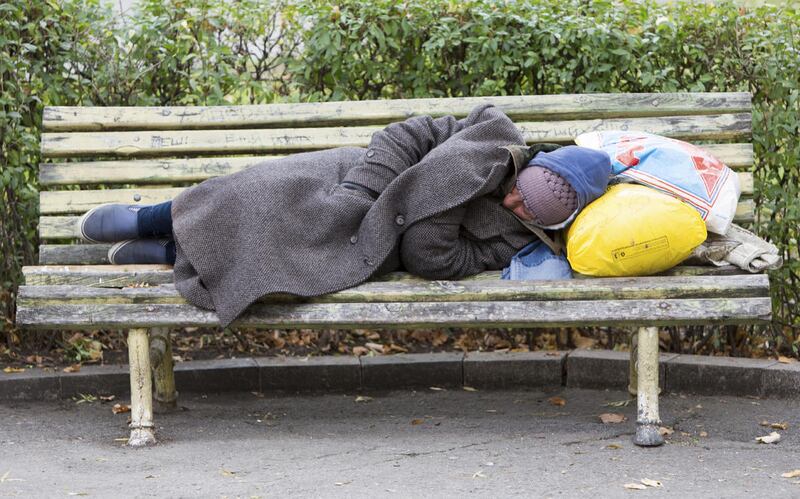Homeless people living on the street are perhaps the most visible poverty indicator, and, according to government reports, their numbers have declined by almost a third since 2007.
But those findings have left some scratching their heads, as in many cities the number of homeless on the streets appear to be as high as ever. A new report from the American Enterprise Institute may be able to explain the gap — it casts doubt on the decrease reported by the Department of Housing and Urban Development, claiming that changed counting methods and underreporting account for most of the reported "decreases."
Drastic changes in street counts and miscounting may be a playing a major role, said Kevin Corinth in his AEI report, and criminalizing the homeless — making them eligible for arrest and jail — may be leading the homeless to stay out of sight.
"Another red flag is that sheltered homeless counts, which are more reliable than street counts, have been remaining steady," says Corinth.
The country's homeless population is determined by the Department of Housing and Urban Development, or HUD, once a year in January, when thousands of canvassers hit the streets with maps and tally sheets.
In Los Angeles, for example, the city with the largest number of street homeless, about 6,000 people helped with the three-day count. But critics are wary of this method that pinpoints just one point in time and its narrow definition of homelessness — which relies on those who can be found on the street and doesn't account for the "invisible" homeless who are squatting, couch surfing or moving from one family member's home to the next.
HUD counted 578,424 people on the streets and in shelters in January 2014, down 11 percent from 2007. But the Department of Education reported child and family homelessness doubled over the past 10 years.
Chip Halbach, executive director of Minnesota Housing Partnership, told Al Jazeera that HUD numbers don’t reflect the “pretty significant change in the makeup of the homeless population — from individuals to families with children,” a shift he traces to the recession.
Stephanie Van Housen, who works with homeless youths in Iowa City, Iowa, agreed that counts might be missing families and youths who are homeless, who are more likely to crash with friends or family or jump from motel to motel. She described one such 18-year-old with whom she worked who was sleeping on a friend's floor with several other kids.
"He is not homeless according to HUD," Van Housen told Al Jazeera, but "he is constantly tired, misses classes, wears dirty clothes and fails to turn in homework" — all "telltale educational barriers that go with homelesness."
“The only way HUD will help him is if he goes to an adult shelter or sleeps outside in the Iowa weather," she said.
AEI's Stan Veuger said the new findings on counting methods should make everyone rethink the effects of the recession on families and the homeless. The new report "ought to instill caution in those who believe that while the country was going through the deepest economic downturn since the Great Depression, the homeless flourished," he said.
Email: laneanderson@deseretnews.com


